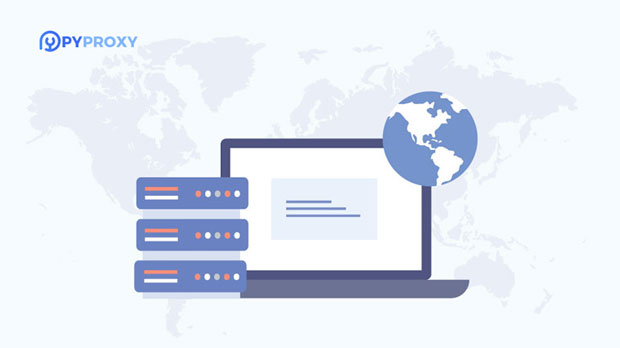In the rapidly evolving world of proxy services, choosing the right provider for your needs is crucial. Two names that frequently come up in comparison are PYPROXY and Miga Proxy. Both services claim to offer reliable, fast, and secure proxy solutions, but which one offers the best value for your money? In this detailed comparison, we will dive into the price-performance ratio of PyProxy and Miga Proxy, examining their strengths, weaknesses, and how they measure up against each other in terms of affordability, speed, and overall performance. Price Comparison: PyProxy vs Miga ProxyWhen it comes to selecting a proxy service, price is often one of the most decisive factors. Both PyProxy and Miga Proxy offer various pricing tiers, but how do they compare?PyProxy Pricing Overview PyProxy provides a flexible pricing model that caters to both individual users and large enterprises. Their pricing structure is tiered, offering basic plans for small-scale use and more advanced plans for business needs. For individual users, the basic plan is relatively affordable, making it an attractive option for those who require a simple, cost-effective proxy solution. However, as users scale up, especially for data-heavy tasks or high-frequency usage, the costs can rise significantly. For larger organizations, PyProxy offers enterprise-level pricing, which can be on the pricier side, but comes with additional features like dedicated IP addresses, enhanced speed, and premium customer support.Miga Proxy Pricing Overview Miga Proxy’s pricing, in comparison, is designed with flexibility in mind, but it tends to be slightly more expensive for basic services than PyProxy. Miga Proxy’s plans start at a higher base price, but they offer more options for customizing your service based on your specific needs. For instance, users can choose between different geographical locations, with pricing reflecting the choice of server regions. This flexibility, however, means that users looking for affordable options may find Miga Proxy less budget-friendly than PyProxy.Price vs. Value While both services have similar pricing models, the key difference lies in what you get for that price. PyProxy’s lower starting price is attractive for individual users and smaller businesses, but users seeking advanced features or better speed may find themselves paying more for additional services. On the other hand, Miga Proxy’s slightly higher initial cost might be justified by the added flexibility and enhanced performance, making it a better choice for users who need a broader range of features, even if it comes with a higher price tag.Performance Comparison: Speed, Reliability, and SupportOnce the pricing has been considered, performance becomes the next critical factor. Both PyProxy and Miga Proxy promise high-speed connectivity and robust performance, but how do they actually deliver on those promises?PyProxy Performance PyProxy is known for its stable and reliable service. Users typically report good speeds with minimal lag, especially on the higher-end plans designed for business or enterprise use. The service’s speed can vary depending on the plan, with the cheaper tiers offering slower speeds compared to the premium options. However, PyProxy’s global network ensures that users from different regions can access servers that are geographically closer, reducing latency and improving speed. Customer support is also an area where PyProxy shines, with a responsive team available to address concerns quickly.Miga Proxy Performance Miga Proxy also offers impressive performance, with users consistently praising its high-speed proxies. What sets Miga Proxy apart is its emphasis on ultra-low latency and high bandwidth, which is particularly beneficial for users who need to perform tasks like web scraping, data analysis, or gaming. While PyProxy delivers stable speeds, Miga Proxy’s advanced infrastructure allows it to offer faster speeds, especially on its premium plans. Miga Proxy’s network is extensive, spanning multiple continents, and this wide coverage ensures that users can always find a server that delivers fast, reliable performance.Reliability and Uptime Both providers boast high uptime, but Miga Proxy has a slight edge in this regard. It provides a 99.9% uptime guarantee, which is a significant selling point for businesses that rely on constant, uninterrupted access to their proxies. PyProxy, while reliable, does not offer an official uptime guarantee, and some users have reported occasional slowdowns during peak usage hours.Advanced Features: Security, Customization, and SupportThe availability of advanced features is another important aspect when choosing a proxy provider. Both PyProxy and Miga Proxy provide features designed to enhance security, customization, and ease of use.PyProxy Features PyProxy offers a range of standard features like IP rotation, SSL encryption, and geo-targeting. These features are essential for users who prioritize security and anonymity. For businesses, PyProxy also provides dedicated proxies, which are ideal for users who require a stable, uninterrupted connection. Moreover, PyProxy's API integration allows users to automate tasks such as proxy rotation, which is highly beneficial for large-scale operations. However, it lacks some of the more niche features offered by Miga Proxy, such as custom proxy setups for specific use cases.Miga Proxy Features Miga Proxy provides similar features like IP rotation and encryption, but it also goes a step further with advanced customizations. For instance, users can configure proxy rules for specific use cases, including restricting access based on IP address or configuring proxies for specific websites. Miga Proxy’s support for both residential and data-center proxies makes it a versatile choice for users with varying needs. Additionally, the service’s customer support is available 24/7, ensuring that users receive assistance whenever needed.Conclusion: Which Proxy Provider is Better for You?In the final analysis, the choice between PyProxy and Miga Proxy largely depends on your specific needs and budget. PyProxy is an excellent choice for users seeking affordable, reliable, and easy-to-use proxies, especially if your needs are more basic or if you are operating on a tight budget. Miga Proxy, however, offers more advanced features, faster speeds, and greater flexibility, making it a better choice for users who require premium services and are willing to invest a bit more.Ultimately, for those who prioritize cost-effectiveness and straightforward use, PyProxy is a solid option. For users who need more customization, higher performance, and advanced features, Miga Proxy is worth the extra investment. Consider your specific requirements—whether it’s speed, reliability, or additional features—when making your decision.
Aug 29, 2025


































































